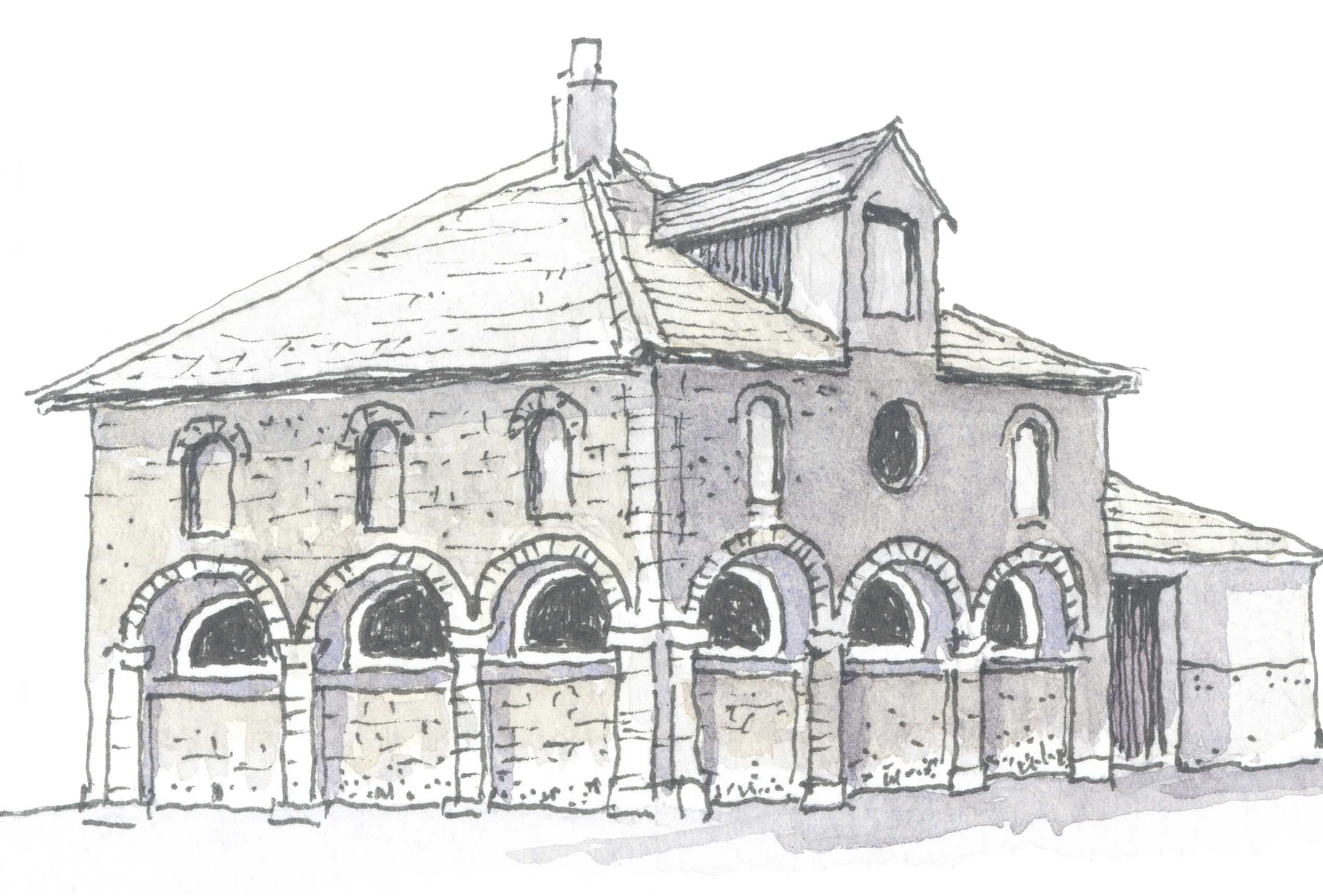Shap Local History Society gathered in the Memorial Hall for the first meeting of the year; Chairman Jean Jackson welcomed everyone and explained that the first four talks of the year would be looking at important periods in the history of Shap; she introduced the speaker Patrick Neaves; who gave an illustrated talk on the Shap Stones.
Mr Neaves began by explaining how he first became interested in megalithic stones as a boy in the South West of England, and recalled being lifted onto the top of one of the stones at Stanton Drew by his father. Many years later when he came to live near Shap, he discovered that there were ancient stones here too, along with burial mounds.
He showed a map of the prehistoric monument covering an area of roughly four miles by two. Shap has 14 scheduled ancient monuments. He then placed the monument in context by explaining that the first people settled the area in about 8300 BC, they made tools from stone and some chipping sites survive around the area, there was a large discovery of chert tools in 1984 during gas pipeline work; chert occurs as black bands in limestone and was used locally like flint. The most famous stone tools from that period are the Langdale axes.
From around 4000BC people began to practice agriculture, alongside their hunting and in the Bronze Age around 3000BC the first henge monuments were constructed. With regard to burial customs, the Neolithic people created long barrows, and the Bronze Age people burial cairns with a bowl barrow containing a burial at the centre with other burials around the perimeter. The burials included skeletons and cremations. There have been few grave goods discovered, but these have included fossils which would have been found locally, and some tantalising records of bone, pottery and metal artefacts found in these sites long ago, the whereabouts now unknown. Mr Neaves had taken part in field walking when land near the avenue and stones had been ploughed, but this yielded little apart from a few beads.
The Shap Stones began at the south of the village with a small circle (now cut through by the railway), an avenue and another large circle which is now lost apart from a few stones in gardens and walls; then a second avenue running roughly north west. One illustration from the 18th century gives some idea of the stones to be seen at that time.
William Camden visited Shap on 1607 and wrote a description of the stones, as did Dr William Stukeley in 1725; he described an ebbing and flowing spring, called Anna’s Well, which is in limestone country so the water naturally disappears in dry periods only to gush forth after rain. It is interesting to note that another spring in limestone is to be found close to Gunnerwell, stone circle at the north of the village.
One Shap vicar, Rev. James Simpson gave detailed descriptions in the 1850s and drew a plan of the layout, having gathered information from older parishioners who could remember positions of stones that had been lost. A series of drawings from that same period by Thomas Bland of Reagill give images of several stone circles and burial mounds as they looked then.
Several events caused the destruction of the stones; the Enclosures Act of 1815, realignment of the turnpike road in 1820 and building the railway in 1844. Later destruction occurred when the limestone quarry was started at Hardendale in the 1960s.
One of the best known stones is Goggleby alongside the footpath between Shap and Keld, it fell over in 1969, but was re-erected in the mid 1970s and this gave an opportunity to discover how the stones were put up originally. A stone in an adjoining field has carvings known as cup and ring marks, some of these would have been on the top of the stone, so out of sight. Stone art is rare in this county.
Mr Neaves said that most of the circles around Shap are constructed from rounded Shap granite boulders, probably deposited by receding glaciers and several of them include one single stone of a different type such as limestone or sandstone, the significance of this is unknown.
Hardendale had a lot of burial cairns, on the high ground, many were opened in Victorian times with few details of the finds recorded. There were images of the Skellaw Hill tumulus believed by many to be the end of the Shap Stones avenue.
Throughout, Mr Neaves, who is a top-class photographer, showed beautiful images he had taken himself, along with some older pictures.
He was warmly thanked by Jean Scott-Smith who has known the stones all her life and considers them to be one of the parish’s greatest treasures. There was opportunity for questions whilst refreshments were served.
